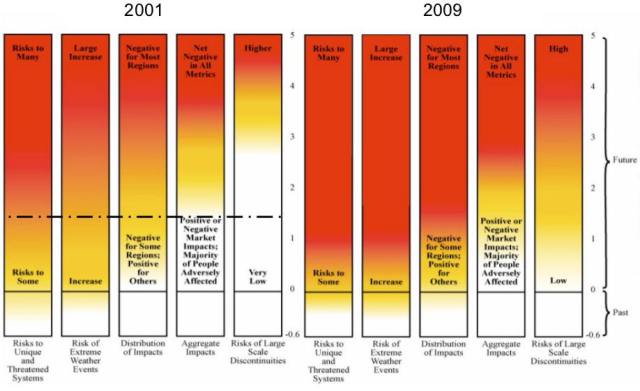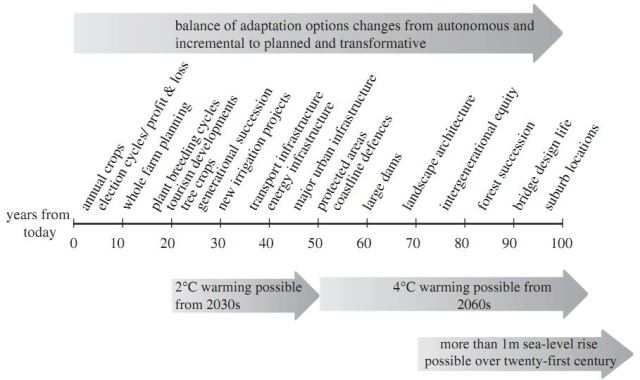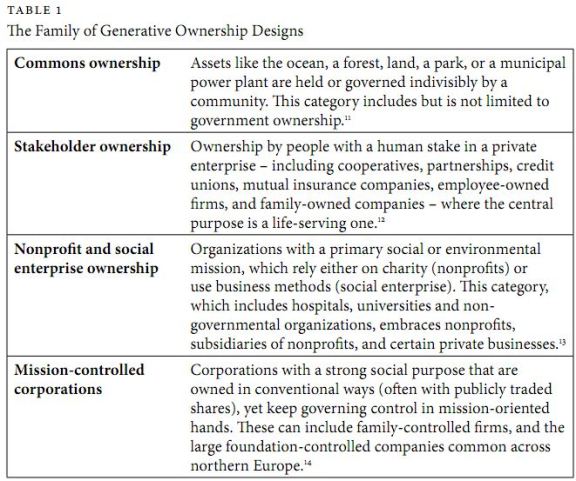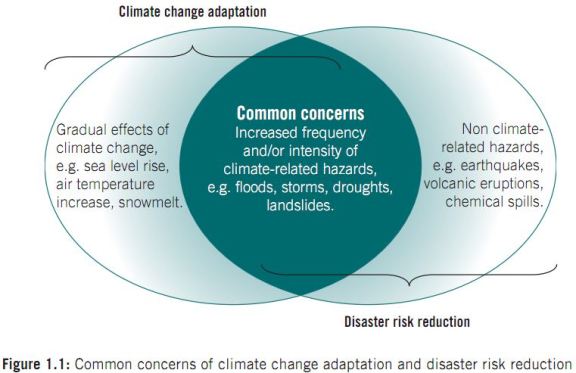Whether the question is one of climate mitigation, adaptation or resilience, the numbers matter. Kevin Anderson, professor of energy and climate change at the University of Manchester and recent past director of the Tyndall Centre, the UK’s leading academic climate change research organization, provides an unvarnished assessment in his 2012 article, “Climate change going beyond dangerous – Brutal numbers and tenuous hope.” (Download article here; a recorded slideshare presentation of the information can be viewed here.)
He begins by reviewing the widely held goal of holding global warming below 2°C, then points out that the estimation of impacts from this level of warming has changed over time (click on figure below to enlarge): “More recent impact analysis suggests 2°C represents the threshold between dangerous and extremely dangerous, rather than between acceptable and dangerous climate change.”

Following a discussion of the almost incomprehensibly massive and rapid decarbonization of economic activity that is needed to stay below 2°C (greenhouse gas emissions reductions on the order of 10% per year, assuming a peak around 2020), he discusses the equally incomprehensible implications of the 4°C warming we are now widely understood to be heading for this century as global greenhouse gas emissions not only fail to decline, but accelerate.
It is fair to say […] that there is a widespread view that a 4°C future is incompatible with any reasonable characterisation of an organised, equitable and civilised global community. A 4°C future is also beyond what many people think we can reasonably adapt to. Besides the global society, such a future will also be devastating for many if not the majority of ecosystems. Beyond this, and perhaps even more alarmingly, there is a possibility that 4°C world would not be stable, and that it might lead to a range of ‘natural’ feedbacks, pushing the temperatures still higher.
In a 2009 article, “Rethinking adaptation for a 4°C world,” Mark Stafford Smith, science director for CSIRO’s climate adaptation program and colleagues explore large-scale adaptation decisions with long lifetimes. A “decision lifetime” is defined as the sum of the lead time involved, and the consequence time of the decision:
Decisions may have a short lead time and short consequence period, such as the choice of which existing wheat cultivar to plant, a decision that can be adjusted every year. Alternatively, they may have a short lead time and long consequences, as with building individual houses, or a long lead time but short consequences, as with developing a new cultivar of wheat for planting. Finally, they may have a long lead time and long consequences, as with the location of suburbs, which are very hard to move once developed.
The figure below shows the lifetimes of different types of adaptation decisions, in the context of anticipated 2 and 4°C world timelines.







